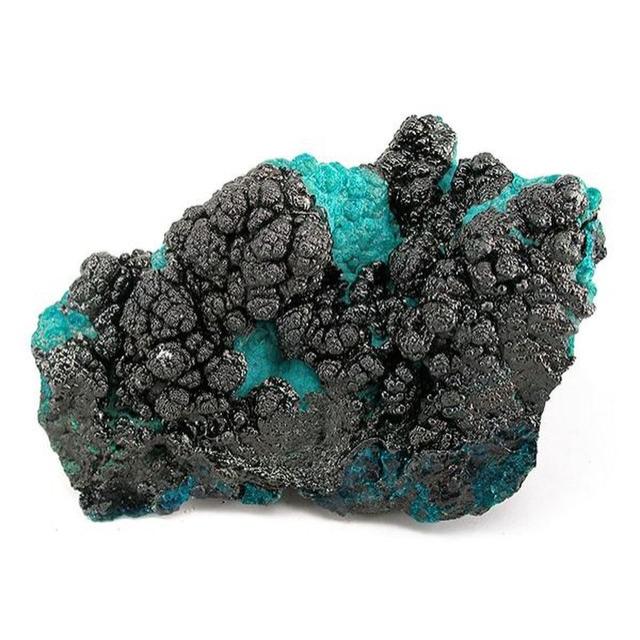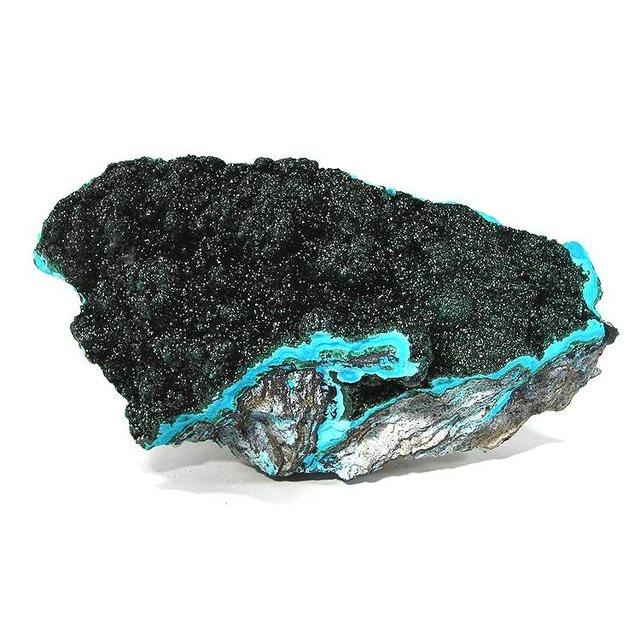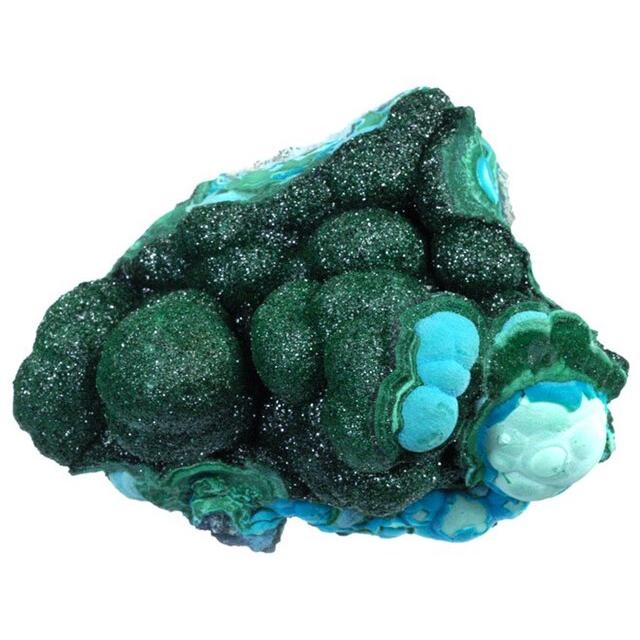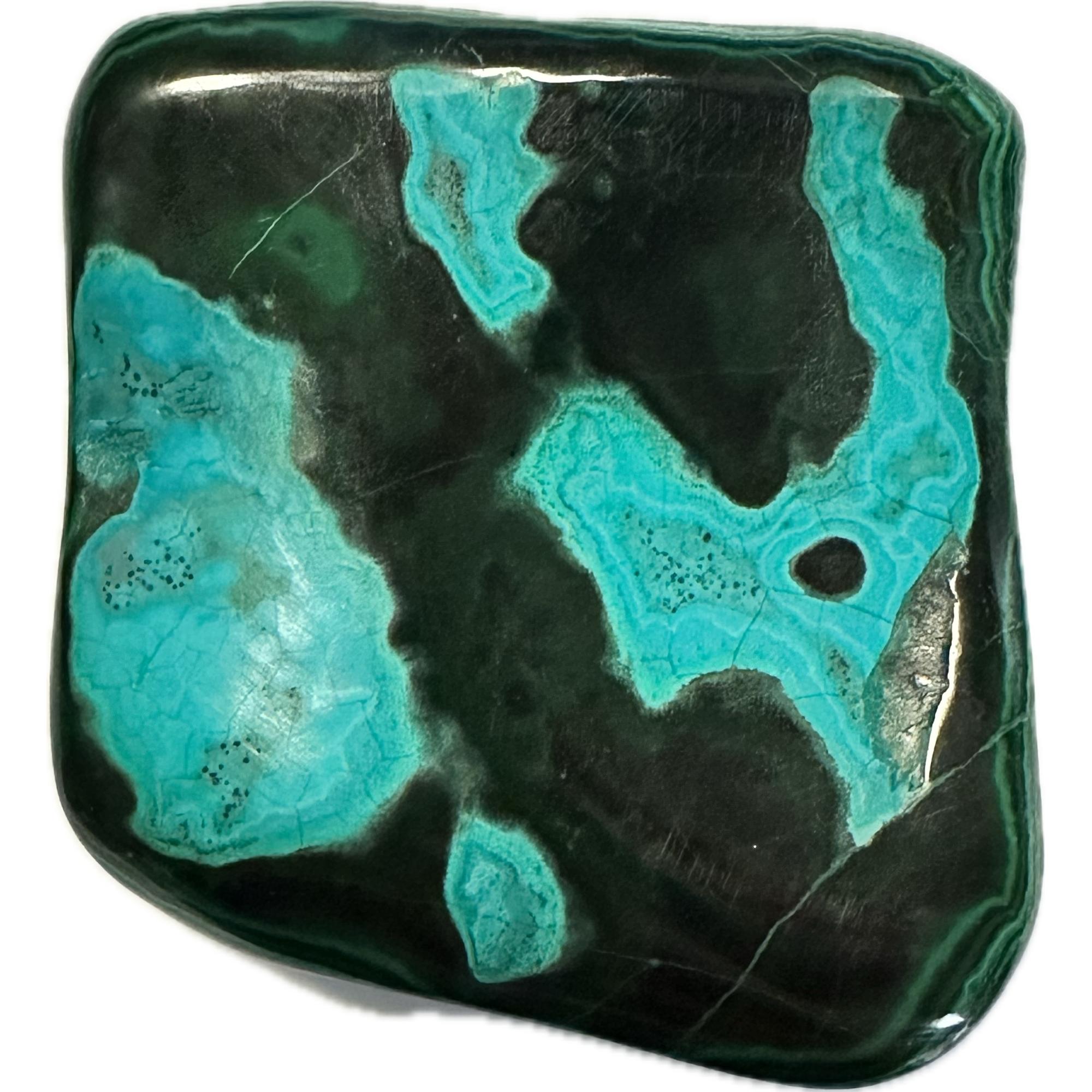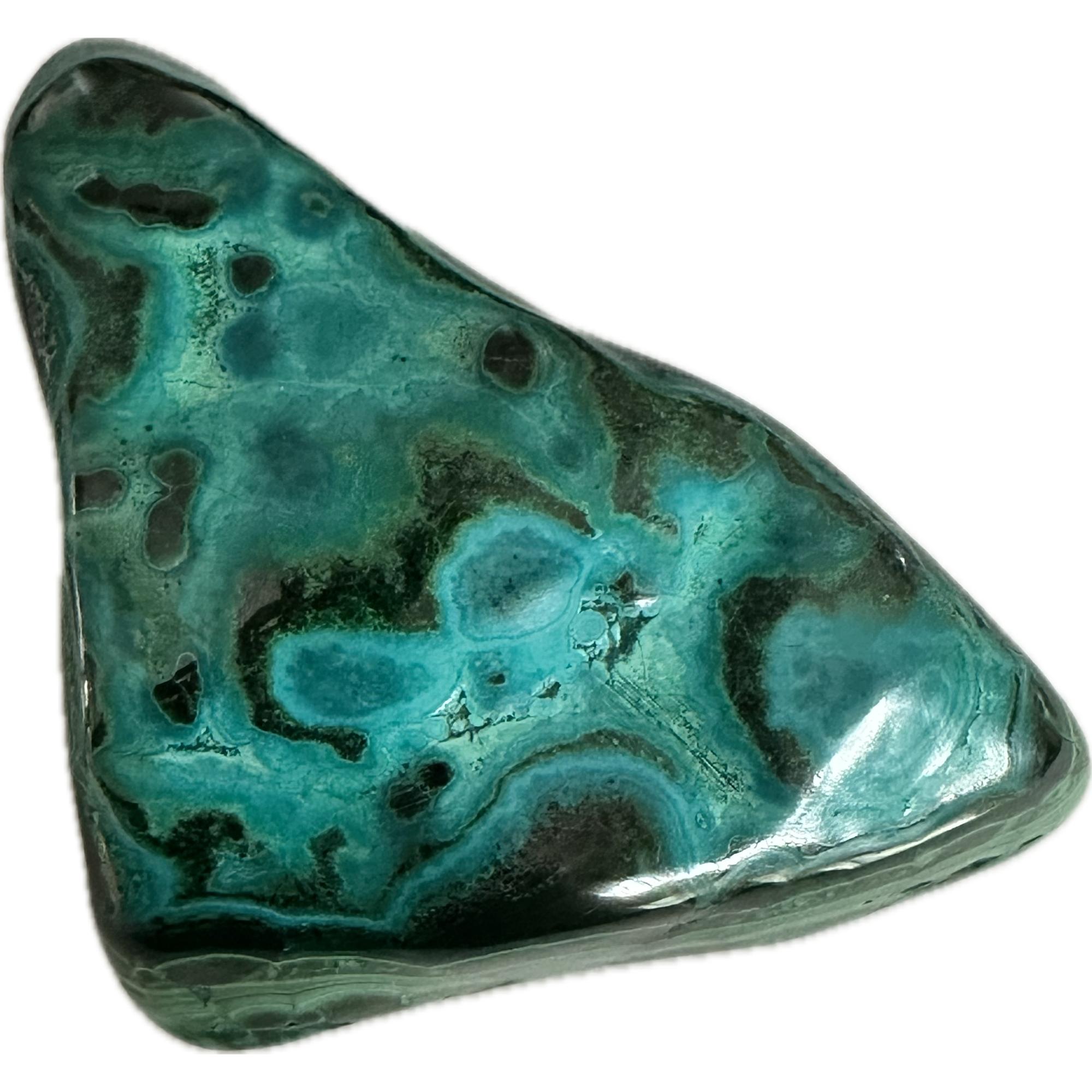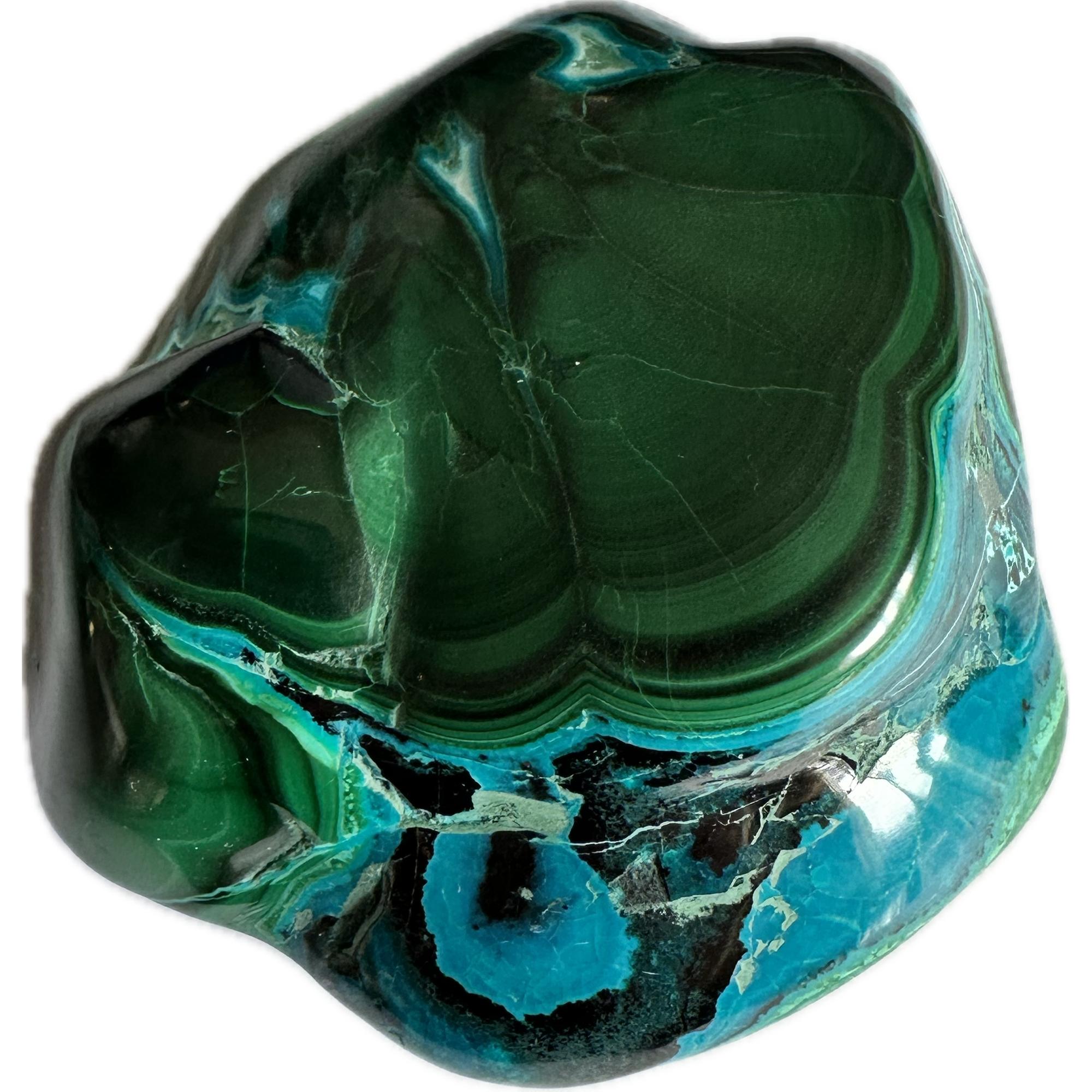Chrysocolla with Azurite and Malachite
Chrysocolla is a fascinating mineral that captivates with its vibrant colors and unique properties. Here’s a comprehensive exploration of chrysocolla, covering its formation, characteristics, uses, cultural significance, and more. This gorgeous mineral measures 3 1/2 inches by 2 inches by 2 1/2 inches and has exceptional color.
Formation:
Chrysocolla is a hydrated copper phyllosilicate mineral that forms in the oxidation zones of copper deposits. It typically occurs as a secondary mineral in the presence of copper ores, often alongside other copper minerals such as malachite, azurite, and turquoise. The formation of chrysocolla involves the alteration of primary copper minerals through chemical weathering processes, resulting in the deposition of chrysocolla-rich material.
Chrysocolla with Malachite commonly forms in association with other secondary minerals in copper-rich environments, such as in the oxidized zones of copper deposits, in the fractures and cavities of rock formations, and in sedimentary environments. Its formation is influenced by factors such as temperature, pressure, pH levels, and the presence of water and dissolved minerals.
Characteristics:
Chrysocolla exhibits a wide range of colors, including various shades of blue, green, turquoise, and teal, often with streaks or patches of brown, black, or red. Its coloration is attributed to the presence of copper, along with traces of other transition metals such as iron and manganese. Physically it is relatively soft, with a Mohs hardness of around 2.5 to 3.5, making it susceptible to scratching and abrasion. It has a vitreous to dull luster and is translucent to opaque, depending on its composition and the presence of impurities. Its texture can range from smooth and polished to rough and granular, depending on the specific geological conditions under which it formed.
Composition:
Chemically, chrysocolla is a hydrated copper silicate mineral with the chemical formula (Cu,Al)2H2Si2O5(OH)4·nH2O. Its composition can vary significantly due to its complex and variable structure, which may include substitutions of copper with other elements such as aluminum, iron, magnesium, and calcium.
Chrysocolla with Malachite often contains significant amounts of water (H2O), which are essential to its formation and stability. The presence of water molecules within its structure contributes to its relatively low hardness and susceptibility to dehydration when exposed to high temperatures or low-humidity environments.
Uses:
Chrysocolla has been valued for its ornamental and lapidary uses for thousands of years. It has been used as a gemstone, decorative material, and pigment in jewelry, sculpture, pottery, and other artistic creations. Its vibrant colors and unique patterns make it highly sought after by collectors, artisans, and jewelry designers.
In addition to its aesthetic appeal, chrysocolla has been used for its perceived metaphysical and healing properties in various cultures and traditions. It is believed to possess calming and balancing energies, promoting emotional well-being, communication, and inner harmony.
Geologically, chrysocolla serves as an indicator mineral for the presence of copper deposits and is used by prospectors and geologists in mineral exploration and resource assessment. Its occurrence in association with other copper minerals can provide valuable insights into the geological history and mineralization processes of a particular area.
Cultural Significance:
Chrysocolla has held cultural significance and symbolism in various civilizations throughout history. In ancient Egypt, it was associated with the goddess Hathor and was used as a protective amulet against negative energies and illnesses. In ancient Greece and Rome, it was associated with the goddess Venus and was used as a symbol of love, beauty, and femininity.

Prehistoric 101 (Learn about fossils, minerals, and meteorites)
What is Chrysocolla















